On the Day of Archaeology 2014 I was preparing for a series of events organised and coordinated by the Archaeology Team at Bristol Museums, Galleries & Archives for the 24th annual Festival of Archaeology 2014. The Festival runs from Saturday 12 – Sunday 27 July 2014 and offers over 1,000 events nationwide, organised by over 400 museums, heritage organisations, universities, local societies and community archaeologists.
The purpose of the Festival is to showcase the very best of archaeology and give people the opportunity to learn about local heritage, have a go at digging and recording finds, watch experts at work and find out about the latest discoveries in their area.
The series of events has involved the Archaeology team working with a variety of local history and community groups including Bristol Threatened History Society, Lawrence Weston Community Farm, Kings Weston Action Group, Sea Mill
Archaeological Research Team, Friends of Badock’s Wood and Bristol and Region Archaeological Services to trace the history of Bristol from the Bronze Age right up to the 18th century.
There has been the opportunity to explore the history of Bristol with a tour of Castle Park – the site of Bristol Castle, one of the largest medieval castles in England and once compared to the Tower of London’s White Tower. Discover and experience life before and after the Romans with events at Badock’s Wood, Lawrence Weston Community Farm and Kings Weston Roman Villa. Uncover Vanburgh’s 18th century paths at Kings Weston Estate. Learn about pilgrims in Medieval Bristol at M Shed and join a Medieval pageant celebrating pilgrimage in Brislington.
Gail Boyle Senior Collections Officer (Archaeology) at Bristol Museums, Galleries & Archives said:
“The Festival of Archaeology is undoubtedly one of the highlights of the year for Bristol Museums’ Archaeology Team. The two week-long event provides us with a great platform to showcase Bristol’s fantastic archaeological sites, museum collections and the work of such a wide variety of local interest groups. The Bristol programme has never been so packed, there are so many opportunities for people to be inspired by all things archaeological and all our activities are free of charge. You can find out more about our events through the Festival of Archaeology or at bristolmuseums.org.uk”
As of Tuesday 22 July, five events have taken place, the Bristol Castle Walk with Mike Ponsford of Bristol Threatened History Society, Riveting Romans, Ancient Woodland Activities, Conservation at Kings Weston and one of the guided historical walks around Badock’s Wood. All of these events have been a great success with over 400 visitors.
Mike Ponsford led an interested crowd on a leisurely walk around Castle Park examining the remaining structures of the castle as well as describing the look atmosphere and history of this imposing fortification of Medieval Bristol, which once dominated the Bristol skyline. The sun shone as the ‘Riveting Romans’ event gave visitors the opportunity to explore Kings Weston Roman Villa and learn more about life and food during the Roman Period. Cherry Hubbard from Unfolding History had a table with Roman food and ingredients, kitchen utensils and recipes illustrating the variety of foods which the Romans ate and introduced to Britain. The Sea Mills Archaeological Research Team (SMART) presented their 3 years of research on the Roman Harbour at Abona whilst the Juicy Blitz project at Bread Youth in Lawrence Weston made a Roman inspired smoothie called Brutus Cassius which was given free to all visitors.
‘Ancient Woodland Activities’ took place at Lawrence Weston Community Farm with visitors having the opportunity to explore the farm and meet the animals as well as wander through Water Vole Woodland to discover woodland activities taking place amongst the trees. The activities included willow weaving and hurdle making, delicious woodland juice making using dandelion and burdock, charcoal making and drawing as well as green wood working.
‘Conservation at Kings Weston’ was organised by Kings Weston Action Group who held an alfresco exhibition on the history of Kings Weston estate in the Echo, one of the garden pavilions in the historic park. There was also the opportunity to celebrate the 350th anniversary of one of Britain’s most famous architects, Sir John Vanbrugh and discover his work on the estate. Kings Weston Action Group also launched a new walking guide and map about the estate.
The historical walk through Badock’s Wood has been led by the Vice-Chairman of the Friends of Badock’s Wood Alan Arburrow. Alan has lead a delightful and enjoyable stroll around the woodland describing the history of the woodland from the Bronze Age Burial mound through to Dr Sir Stanley Hugh Badock’s gifting of the woodland to Bristol City Corporation (now Bristol City Council), in perpetuity on the condition of the Corporation also giving 15 acres of adjacent land. Alan also showed up the gradual series of improvements which the Friends have done to maintain the woodland as well as talking about their community and young people engagement work to increase appreciation of this lovely woodland.
This series of Festival of Archaeology events has been successful through the enthusiasm and hard work of Bristol Museums, Galleries & Archives staff, local history and community groups and a donation from Bristol Threatened History Society.
I recently helped out on another Archaeology Day School – ‘An Introduction to Human Remains’ which was taken by Dr Heidi Dawson.
I like human remains. I’ve excavated human remains. But I have to admit to having limited experience of analysing human remains– which is what the day was about. So the day before, I printed out copies of the presentation, the additional resources and the worksheets for all of the participants, I gathered up the boxes of human remains which we were going to analyse and I eagerly awaited the following day.
So I arrived at Bristol Museum & Art Gallery early, met up with Heidi and we got ready for the day. After a slight hiccup with the projector and a missing lead we got started. Heidi started by talking about why archaeologists are interested in human remains and used examples from Wayland Smithy in Oxfordshire, as well as West Kennet and Fussell’s Lodge in Wiltshire, to show the variety of information which we can gather about a society. From burial and ritual practices, life expectancy, diet and nutrition, disease, population movements and much more!
Heidi had brought along the left hand side of one of her teaching skeletons for the participants to set out. So everyone lined up and took some of the bones and laid them out. There was no mixing of the leg bones and the arms
bones!! All of the bones were laid out exactly and no one used the labelled diagram.
Our second theory session was on the analysis of human remains and the techniques which archaeologists use. By examining individual skeletons we can tell whether the person was male or female, their age, lifestyle, diseases as well as any injuries during the individual’s lifetime.
For me, the most interesting aspect was learning about ‘Diffuse Idiopathic Skeletal Hyperostosis (DISH)’. This is a joint disease of the spine when the ligaments in the spine ossify (the process of laying down new bone material). The result of this that the spine has a melted candle wax appearance down the right side and the vertebrae fuse together. This main cause of this disease in still unknown but it has been connected with diabetes and obesity and appears to occur more in males than in females.
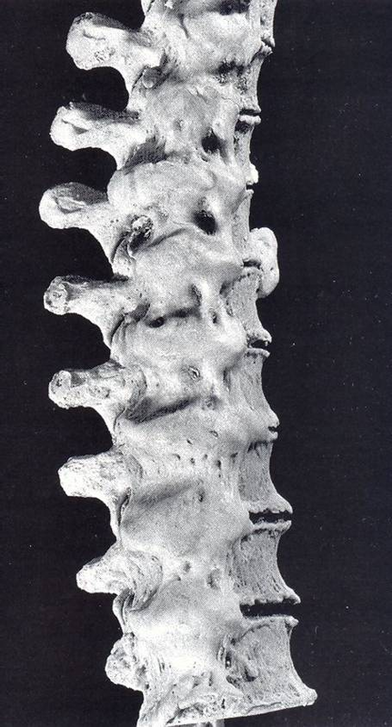
An example of Diffuse Idiopathic Skeletal Hyperostosis (DISH)
Did you know…?
If disease is present on bones, it means that the immune system was working and the individual may be someone who survived the disease. No evidence of disease on the bones suggests that the individual did not survive the disease.
After lunch, we unpacked the boxes and human remains and in groups started to lay out the bones. I worked with each of the groups helping were I could and answering questions. The more detailed questions I left to Heidi although we were both stumped when asked whether DNA analysis could be used to differentiate blood groups (with further research, I have found that in some cases - yes you can!)
Once the remains were laid out, each of the groups started to analyse their skeleton to found out as much as possible about the person.
One group had the remains of a monk from St James Priory in Bristol, who was older than 50 and suffered from the spinal joint disease Diffuse Idiopathic Skeletal Hyperostosis (DISH). This suggests that he had a rich diet during his
lifetime and may have had diabetes and/or was obese.
The second group had the remains of a young man, aged between 21 and 25, whose height was approximately 5 foot 10 inches and had possibly died from blood poisoning from an abscess in his jaw.
The third group had the partial remains of a female, aged over 50 and who may have had arthritis.
I can safely say that everyone, including myself, had a marvellous day learning about the analysis of human remains and what bones can tell us.
It makes me ponder what my bones will tell a future archaeologist about my life…
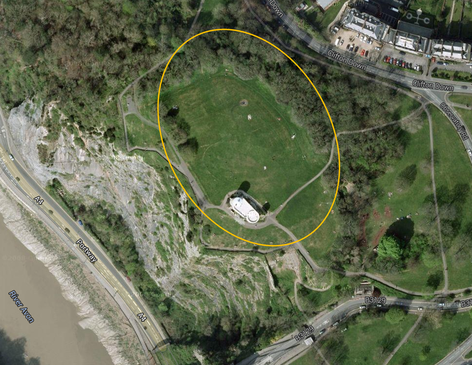 Approximate area of the Iron Age Hill Fort © Google Approximate area of the Iron Age Hill Fort © Google On a still and slightly foggy morning ... I’m trying to create an atmosphere …
I tagged along with Gail and Zac to the Iron Age Hill Fort on Clifton Down (where the observatory is) to observe a drone demonstration. With our risk assessment and our sensible shoes we carefully walked along the paths to the Iron Age Hill Fort and met up with our Drone Operator Stephen.
Before I go any further I want to point out that drones are being increasingly used archaeology. Unlike the drones used by military organisations, archaeology drones have emerged through radio controlled hobbyist models and are tools used for aerial photography, regional surveys, site identification, mapping, 3D modelling and creating virtual reality environments. They have been used with great success in Peru to map sites from the 1300 year old Moche civilization (they pre-date the Incas). The ruins of the Moche cities have deteriorated so much that they can hardly be seen anymore, but, the aerial photographs can be made into a maps and 3D models. These techniques mean that the layout of the cities can be seen for the first time in centuries. So back to our demonstration…
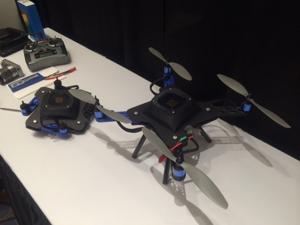
An archaeology drone created using a 3D printer by Arch Aerial (http://archaerial.com/)
After Stephen checked that the drone had the correct flight programme loaded and that the flight programme was not going to direct the drone to crash into the observatory or a nearby tree, we were nearly ready to go. Stephen told us that the his drone can fly to 2km above the ground but we only needed it to be about 40m above the ground. After one final check to ensure that no passers-by would wander under the flight path, we launched the drone! The drone
has propellers so it more gracefully rose from the ground than being launched like a rocket into the sky – but still really cool to watch! So we observed as the drone hovered about 40m off the ground moved about taking approximately 150 photographs. I was amazed at how quick this was done – up and down in 3minutes! As the flight programme is loaded onto the drone, it can pretty much fly itself so there are many, many possibilities for this technology to be used in, for example, community archaeology projects. I think that the technology will show that archaeology is becoming increasingly tech-savvy and this will appeal to more young people, some of whom see us a brightly dressed bumble bees crawling around the ground with a trowel! There is also the possibility of creating virtual reality environments and 3D models of ancient and scheduled monuments and hill forts. There is the potential that these virtual reality environments and 3D models can be used to enhance the Prehistoric Period Learning workshops at Bristol Museums, Galleries & Archives…
Medieval Mayhem! was a family event day organised around the crafts of Medieval Bristol - Spinning, Weaving, Dyeing and Pottery Making. The event was kindly funded by The Worshipful Company of Dyers. 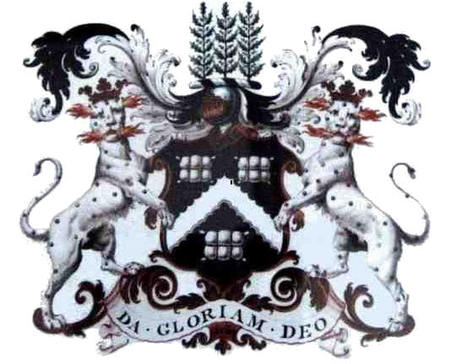 Coat of Arms of The Worshipful Company of Dyers (http://www.dyerscompany.co.uk/) Throughout the day we had a variety of activities... Medieval music, A medieval trail, Dressing up in replica costumes, Medieval hairstyles created by trainee hairstylists from Reflections Training Academy, Photo booth, Medieval spinners, Medieval dyers, Finds identification and handling table, Medieval food, Craft activities - heraldic shield making, jewel casket decorating and brass rubbings, Storytelling 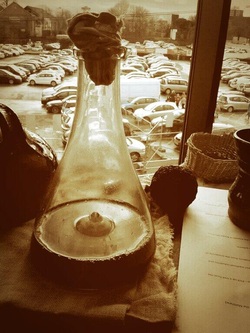 The Medieval dyers ( The Mulberry Dyer) demonstrated the various dyeing techiniques which were used during the Medieval Period. It was fascinating to discover how the different dye colours were created. Did you know!Urine was used to make blue dye!
We were also joined by Medieval Musicians Steffan Llwyd and Kate Cullen, who created a wonderful Medieval atmosphere with their variety of musical instruments which they were also happy to talk about with our curious
visitors.
The cutting and glueing activities were heraldic shield making, jewel casket box decorating and brass rubbings. All of the craft activities were queued out!! It was brilliant watching our young visitors creating their own heraldic shields
and decorating jewel casket boxes.
I had an amazing time and Medieval Mayhem! was a complete success with 3133 visitors and reems of positive feedback
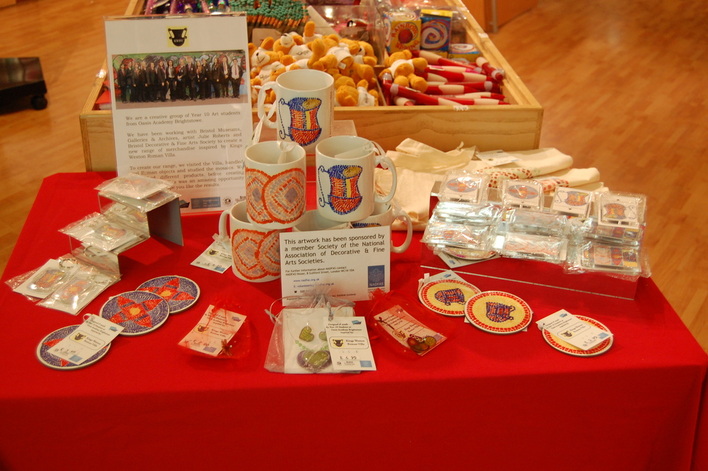 © Bristol Museums, Galleries & Archives The Roman Merchandise Project has been a wonderful project to be involved in. The project has been part of a wider programme of events connected with the Roman Empire: Power & People exhibition. It was funded by Bristol Decorative & Fine Arts Society, promoted ‘Kids In Museums’ Takeover Day and involved Year 10 Art Students at Oasis Academy Brightstowe working with the artist Julie Roberts to design and create a range of merchandise inspired by Kings Weston Roman Villa. At the start of the project, we took the students to visit Kings Weston Roman Villa and told them about the discovery and history of the Villa. Quick Reminder!
Kings Weston Roman Villa was discovered during the construction of Lawrence Weston housing estate in 1947. Whilst two buildings were uncovered, only the Eastern Building was fully excavated from 1948 - 1950 by George C. Boon and John Clevedon Brown. Finds from the site are currently on display at Bristol Museum & Art Gallery. During the visit to Kings Weston Roman Villa, the students got the opportunity to handle real Roman objects and study the Roman mosaics discovered at Kings Weston Roman Villa and from Brislington Roman Villa (which no longer exists). Over the next two sessions, the students researched the wide variety of products which are sold in museum shops, and most importantly, which products are commercially viable i.e.: sell the best. It was decided that the range would focus on mugs, coasters, magnets, key rings, hand printed bags and jewellery and that the designs created could be used on a variety of products. Our group of students really engaged with the idea of the project and under the excellent guidance of Julie Roberts, enjoyed creating their unique and exciting designs for the range of products. The designs were created using paint and teeny tiny sponge squares! The hand printed bags were meticulously printed by hand using fabric paint and small sponges. Over the course of the sessions, I really enjoyed chatting to the students, answering their questions and asking them about the parts of Kings Weston Roman Villa which had inspired their design. From the start of the project, we had decided that a Launch Party for the new merchandise was an important finale to the project. So on Monday 16th December 2013, in time for Christmas, after a tour of the Orpheus Mosaic and Roman Empire: Power & People conducted by Archaeology Curator Gail Boyle, the collection was officially unveiled in Bristol Museum & Art Gallery shop. Guests at the launch included then Museum Director Julie Finch, representatives from Bristol Decorative & Fine Arts Society and Kids in Museums, the artist Julie Roberts, as well as Parents, Teachers and Students from Oasis Academy Brightstowe. To sum up the speeches, the student's designs and products looked amazing and they should be very proud of their work. Julie Finch presented the students with their Kids In Museums Takeover Day certificates and thanked the students for their hard work, Bristol Decorative & Fine Arts Society for funding the project and Julie Roberts for her hard work.
Happy New Year to everyone!! What a start to the New Year!!! I can safely say that the highlight of coming back to work was a trip to see the new visitor centre at Stonehenge, and of course to see Stonehenge itself!! At the moment the visitor centre sticks out like a sore thumb but with time it will blend in with the local landscape and from Stonehenge, you can't see it. On this windy and exposed spot, the visitor centre is a welcome and warm area of shelter. With the coffee shop and gift shop occupying one side of the building, the other is completely devoted to the exhibition telling the story of not only the history of Stonehenge but of the people who built it. The current temporary exhibition ‘Set in Stone? How our ancestors saw Stonehenge’ explores our evolving understanding of Stonehenge from medieval myths and antiquarian theories through to modern archaeological thinking. Quick History Lesson!
The original monument was constructed around 3000 BC and was a simple circular earthwork enclosure. A ditch was dug out and the chalk used to form an outer and inner bank. Within the circular enclosure 56 timber posts or stones were placed in a ring. The site was used as a cremation cemetery for several hundred years. Around 2500 BC, the central stone settings were constructed and the circle of sarsen stones and smaller bluestones were placed to create the monument recognised by millions today.
This was my first trip to Stonehenge and like everybody else … I’ve seen the marketing photographs – I know what Stonehenge looks like!! Bright blue sky showing the stones off at their best, snow on the ground, photographs taken at sunrise and sunset. Well after a short bus ride from the visitors centre, I arrived a few hundred metres from the stones and started to walk towards them … and boy was that angle of approach a let-down!! The stones looked squashed and tiny and nothing like the photographs!!
I contained my disappointment and continued to walk forwards, following the path around two sides of the stones. The further down the path I walked, the better Stonehenge looked. The Stonehenge I recognised from photographs started to appear, with its beautifully spaced out stones and elegant shape. I could see why Stonehenge has fascinated countless generations and will continue to do so.
Fun Fact!
The average weight of the sarsen stones is 25tons. The Heel Stone weighs 30tons. The smaller bluestones each weigh 2 - 5 tons.
My day out to Stonehenge was wonderful. I really enjoyed looking around the exhibition exploring all aspects of Stonehenge and the historic environment constructed around it. My favourite part was the entrance to the exhibition where you can stand inside a computer generated replica of Stonehenge and look out at the landscape as day changes to night, through the changing seasons and the passing of time. Well worth a visit!
T’was the week before Christmas……
…… and something was stirring......
……The Festival of Saturnalia
During the Roman Empire, The Festival of Saturnalia was celebrated with a sacrifice at the Temple of Saturn which is in the Roman Forum. There was a public banquet and private gift giving as well as lots of parties and a carnival atmosphere. At the Museum, we celebrated through craft activities, making masks of the God Saturn, decorating gift boxes with stars and moons and making 3D stars.
World Cultures highlighted the winter traditions of cultures around the world such as Father Christmas’ shaman connections and the Museums amazing Inuit material which included a beautifully crafted baby’s sealskin coat.
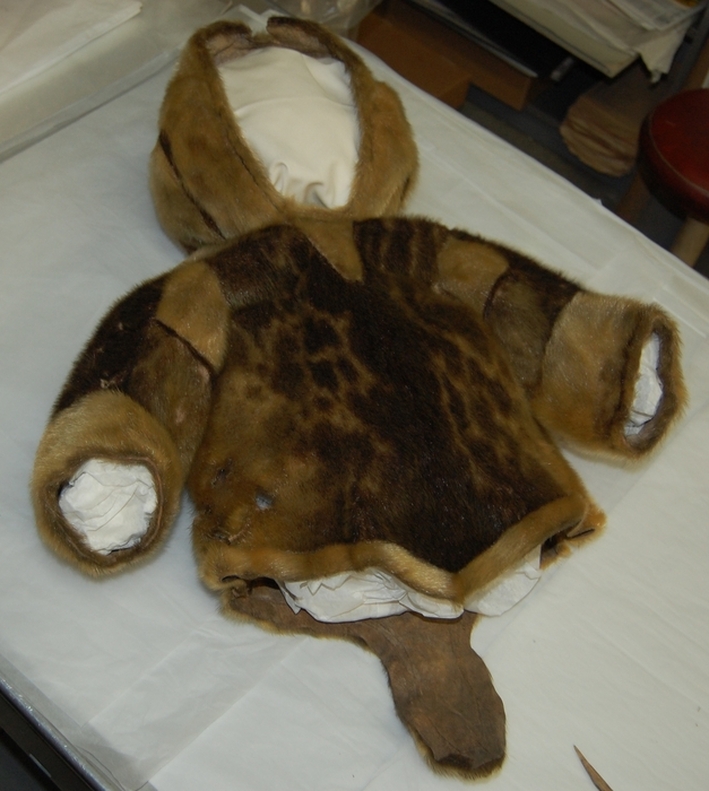 Baby Sealskin Coat © Bristol Museums, Galleries & Archives
This has been a busy week so I have picked four highlights of my week to share with you…
The next highlight of the week was meeting Henbury School’s Duke of Edinburgh Group for a second Kids In Museums Takeover Day session at Kings Weston Roman Villa. The students really enjoyed themselves and I was impressed with their skills and attention to detail!! Kings Weston Roman Villa was definitely looking better when we left! I was curious to know what the students thought about our Roman Villa, so I asked them. The answers really made my day – ‘Cool’, ‘It’s nice, just a bit dirty’ and ‘Someone could fall into the plunge pool!’ The week ended with Julie Roberts, the artist working with us on the Roman Merchandising Project, bringing the finished products into Bristol Museum & Art Gallery. It was wonderful seeing the finished designs on mugs, coasters, key rings and magnets as well as hand printed bags, a necklace and earrings set, a ring and a mobile phone charm. I am really looking forward to the launch party on Monday!!
We had the last design session for the Roman Merchandising Project at Oasis Academy Brightstowe this week. We divided the students into groups, making jewellery, hand printing bags, hand printing mosaic designs and I worked with three students helping them to design a logo, labels to go with the products and an information panel which will sit beside the products in the Museum shop to tell customers about the products and who designed them.
I enjoyed working with the three girls creating a logo and labels. The girls were very practical when it came to designing the labels. Taking inspiration from other product labels, the girls knew what they didn’t like and so got straight into designing. The girls wanted to include a message from the group to the customers in the shop:
Designed & made
by Year 10 Students at
Oasis Academy Brightstowe
Inspired by
Kings Weston Roman Villa
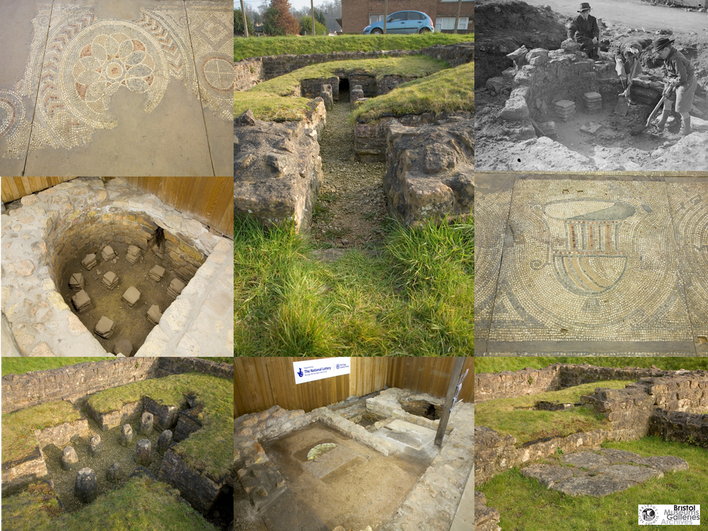 Kings Weston Roman Villa We were also joined in Bristol Museum & Art Gallery by the Cotham School After School Latin Group. Our ‘Little Latiner’s’ will be designing Latin-themed family friendly activities for during February half term holidays. Kate and I took the students on a behind the scenes store tour and showed them lots of Roman artefacts. The students were able to correctly guess what most of the artefacts were – I was impressed!!We then sat down and described to them what a family friendly activity is and what you need to think about when you are creating and designing it. The students were enthusiastic about the project and already had some ideas. I am looking forward to seeing them again and hearing more of their ideas!!
One of the galleries is called ‘ City Lives – Contemporary art in a changing world’. It highlights artists from around the world who have charted the changing landscapes, consumer culture, disaffection, subcultures and high hopes using a wide range of art and media from photography, video, sculpture and installation. Through the variety of media used in the gallery, we are given an insight into what the artists have envisioned city life to be, including our dreams, our worries, the past and the future. This new exhibition is fascinating to walk around as it includes artists and pieces never before seen in Bristol!! There is photography by the Iranian artist Shirin Aliabadi who took the famous ‘Girls in Car’ photographs, a video by Israeli artist Omer Fast and installations from the African artist Meschac Gaba and Lebanese artist Akram Zaatari.
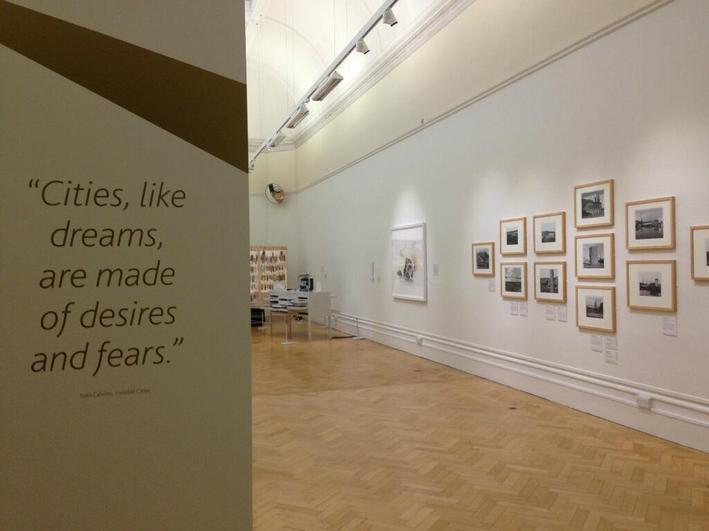 © Bristol Museums, Galleries & Archives On top of that there are also photographs by the British artist Sarah Dobai and images of Bristol by Martin Parr. My favourite part of the gallery is the photographs of the Bristol Docks by Jem Southam. They beautifully trace the history of the dock over the past 40 years.
The second gallery is called ‘Places of Desire’ and it explores themes of travel, romance and modern life through the museum’s collection of Victorian and Edwardian era paintings which range in date from the 1840’s to the 1920’s. There are also pieces by the Pre-Raphaelites Millais, Burne-Jones and Arthur Hughes. 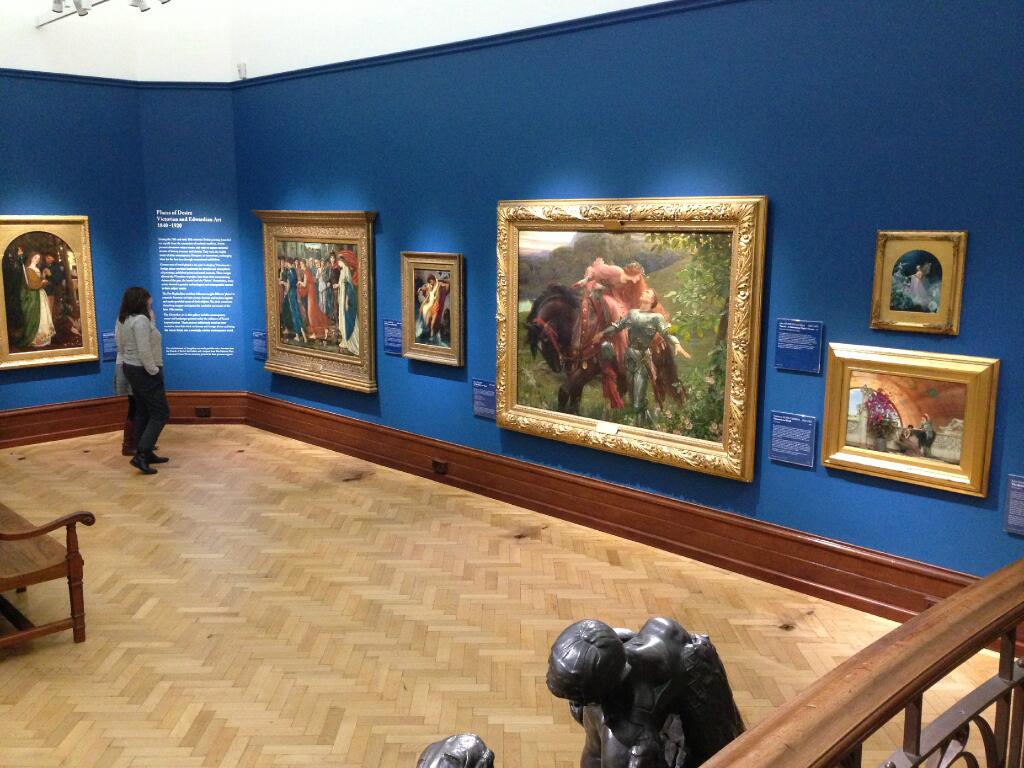 © Bristol Museums, Galleries & Archives I was told that this time period was an exciting time for British and European Art because artists were experimenting with a wide range of styles and subjects. And wow! I could definitely see that when I explored the gallery!! The stories told in each of the painting were so clear, they simply drew you in.
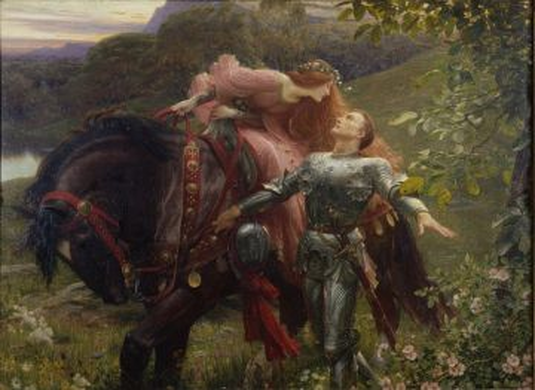 © Bristol Museums, Galleries & Archives My favourite painting is 'La Belle Dame Sans Merci' by Frank Dickee which is based on the poem written by John Keats. The painting shows a young knight who doesn’t notice the beautiful countryside around him because he has fallen in love with the lady sitting on his horse. The painting, I believe, is a wonderful example of the Victorian fascination with chivalry.
|
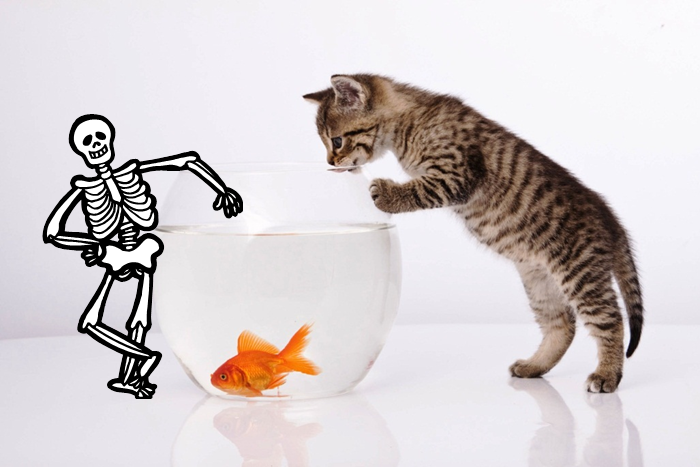
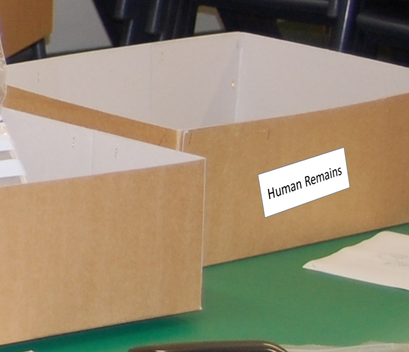

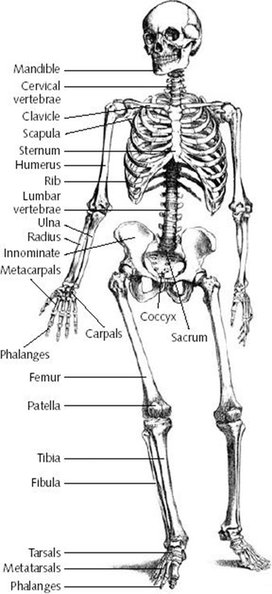
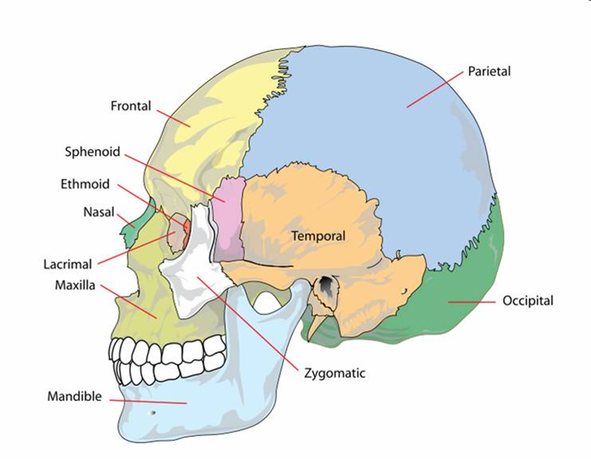









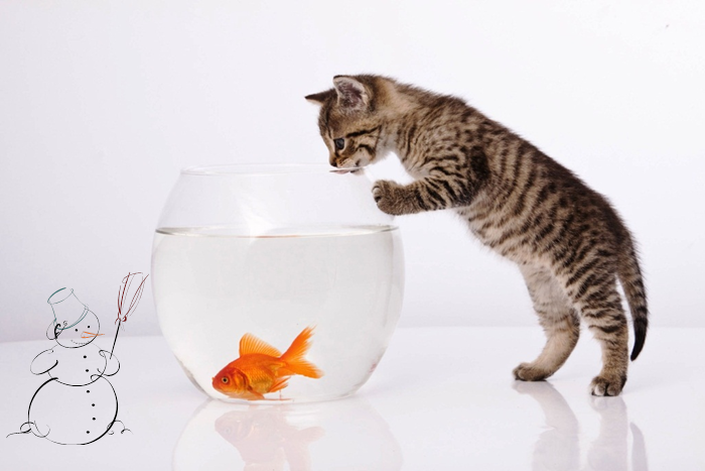
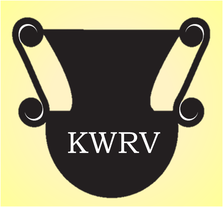




 RSS Feed
RSS Feed
